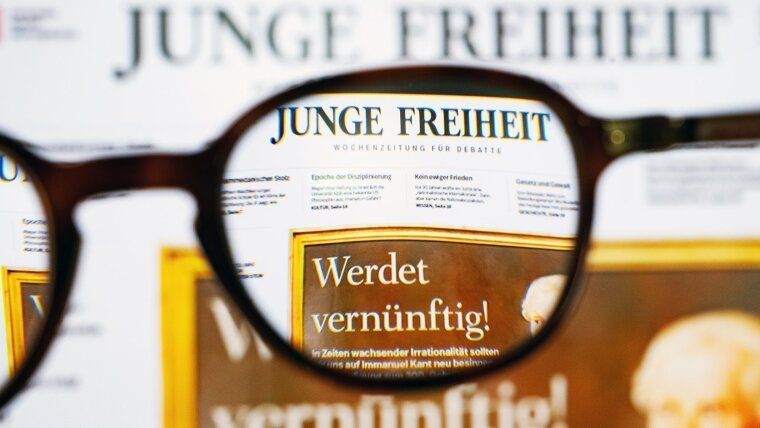
- Research
Published: | By: Stephan Laudien
There are two sides to every coin and it is good journalistic practice to take a look at both sides. In recent years, however, the media landscape has increasingly given the impression that there are more than two sides to the coin, indeed that it may not even be a coin at all. At times, there is talk of a corrective that these alternative media want to provide to the established outlets.
Prof. Dr Ines Engelmann from the Friedrich Schiller University Jena and her team want to investigate these alternative political online media in more detail in cooperation with the Technische Universität Ilmenau. The project "(Without) Alternatives? Influencing factors on the construction of populism in alternative political online media" ("Alternativ(los)? Einflussfaktoren auf die Populismuskonstruktion in alternativen politischen Online-Medien"), which is being funded by the German Research Foundation with around 950,000 euros, has now begun and will run for three years.
Questioning producers about their self-image
"So-called alternative online media are primarily found in the right-wing, conservative and sometimes even far-right political spectrum," says Ines Engelmann. But her team wants to find out whether these new media are enriching the discourse or if they are perhaps positioning themselves against the democratic system or even calling for a coup. Their research project is divided into three sub-studies, two of which are being conducted in Jena and one in Ilmenau.
Prof. Dr Emese Domahidi and Dr Anke Stoll in Ilmenau are concentrating on the ten online platforms with the widest reach and analysing their content on the respective websites and social networks such as Telegram. The focus is on platforms such as "Tichys Einblick", "Compact" and "PI-News". Ines Engelmann explains that the content analysis automatically compares the alternative media with mainstream media such as "Süddeutsche Zeitung", "Frankfurter Allgemeine" and others. The emphasise is on words and their meaning.
In addition to this, doctoral students Antonia Wurm and Immanuel von Detten in Jena want to analyse the producers and audiences of alternative media. "We want to question the producers about their self-image, structures and goals," says Antonia Wurm. However, it is not yet clear whether the producers of alternative media will actually provide information. "We are bypassing this issue when analysing the audience," says Immanuel von Detten, "where we shed light on the published user contributions, the political enemy images they contain and interactions with the producers."
Wide reach despite limited resources
According to Ines Engelmann, the spectrum of so-called alternative political online media (APOM) currently comprises around 120 services in German-speaking countries. They range from left-wing media critical of capitalism and conspiracy theorist channels to right-wing populist and far-right media. "These alternative media experienced a noticeable upswing during the coronavirus pandemic," says Antonia Wurm.
Other hot topics were the so-called refugee crisis in 2015 and the current war in Ukraine. Due to the shift to digital, these media have a large reach with comparatively low resources. However, Ines Engelmann believes it remains to be seen what causes this reach, i.e. what motives of producers and users help determine the content of alternative media. Another interesting question is whether the content of alternative media expands democratic discourse or whether it tends to turn against democracy. "Only when there are results on this will it be possible to decide to what extent regulation of alternative media might be necessary," says the Jena communication scientist.